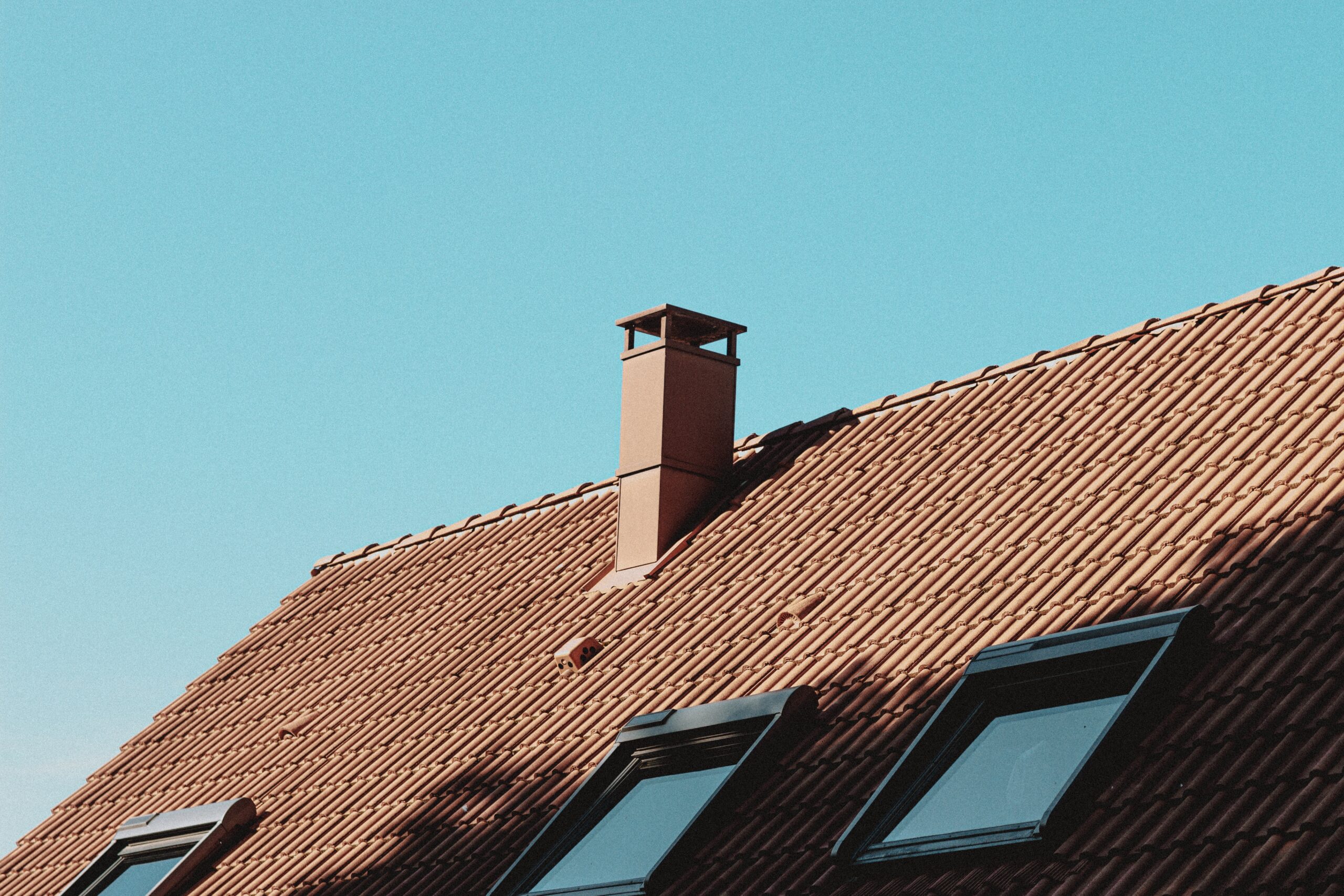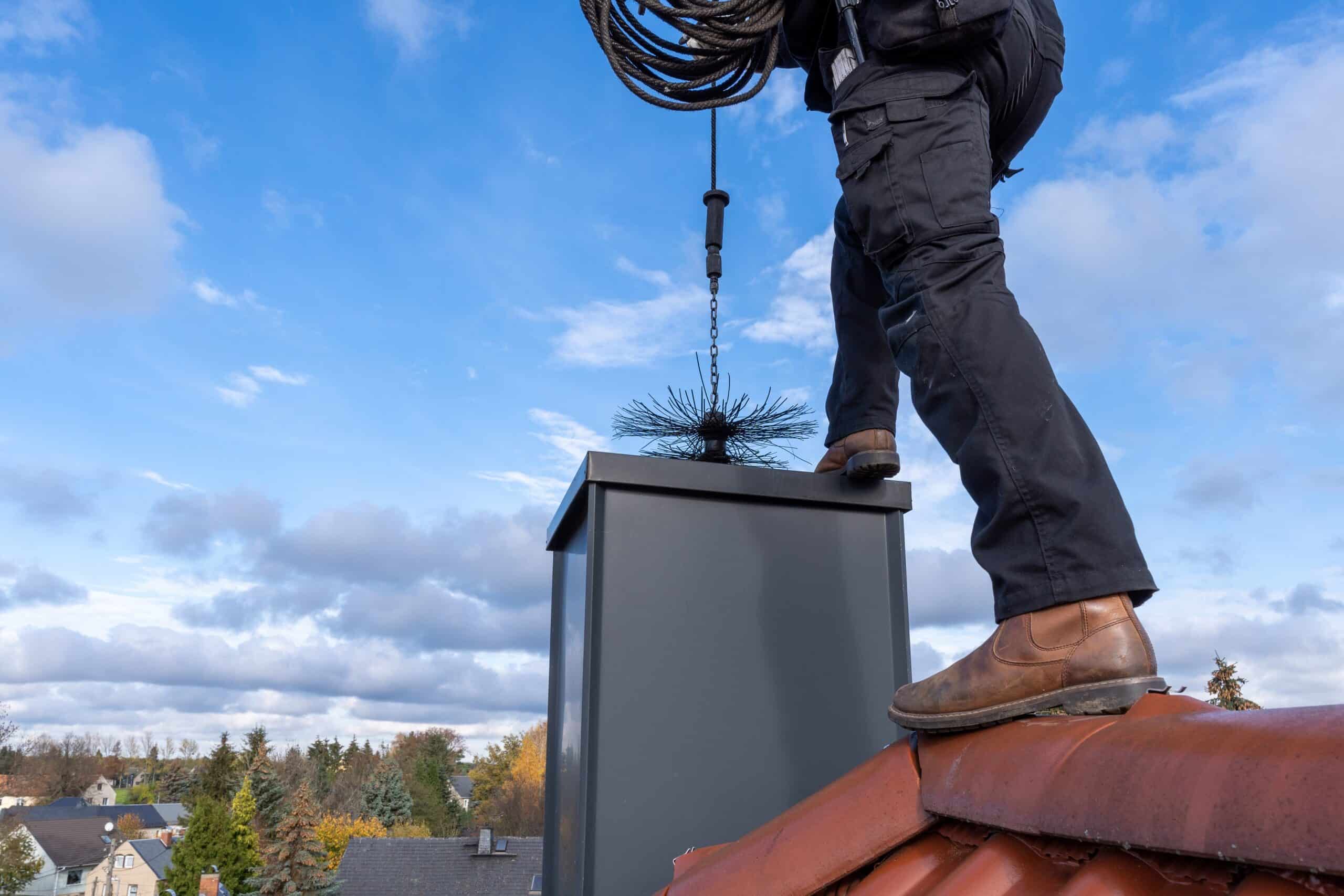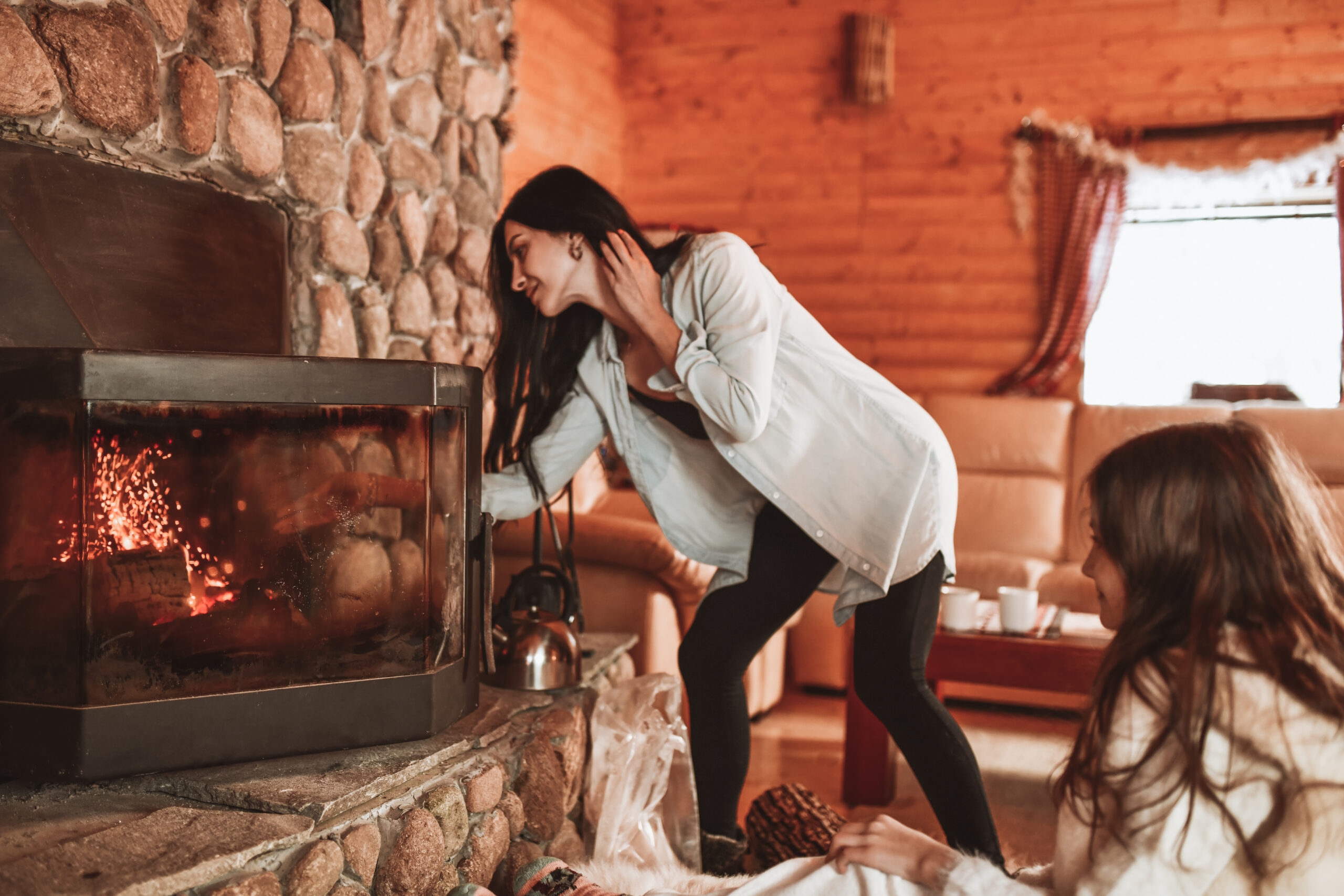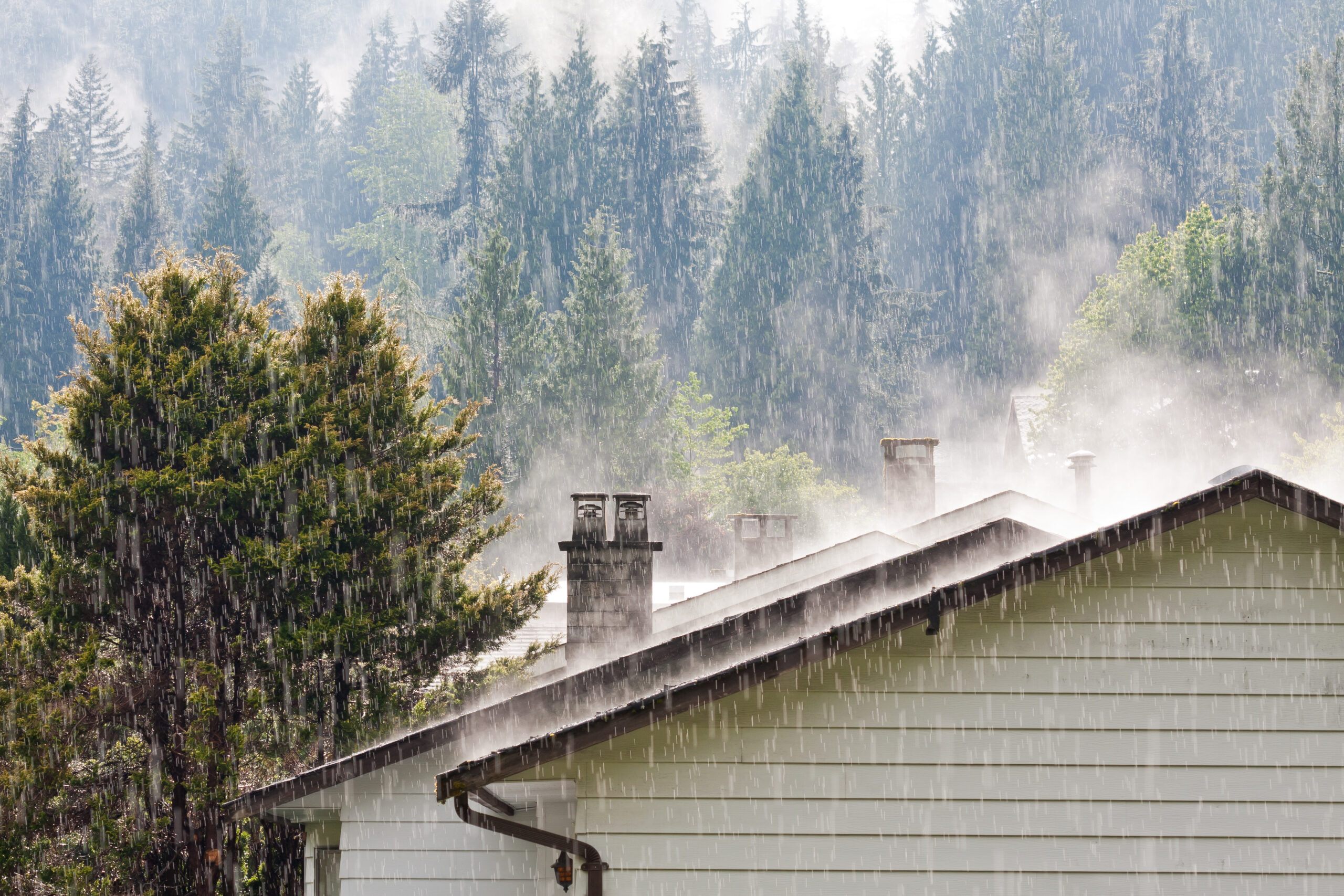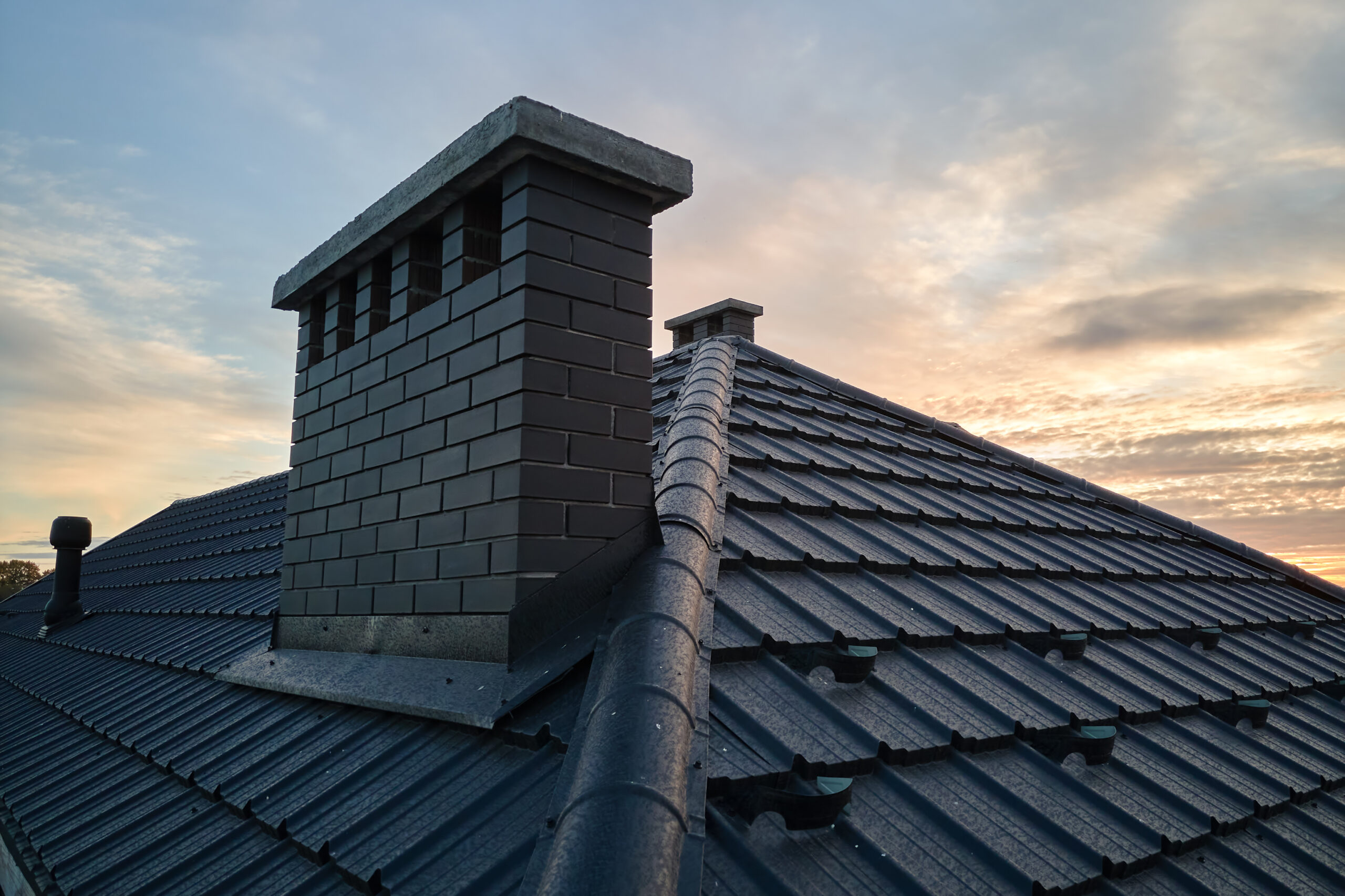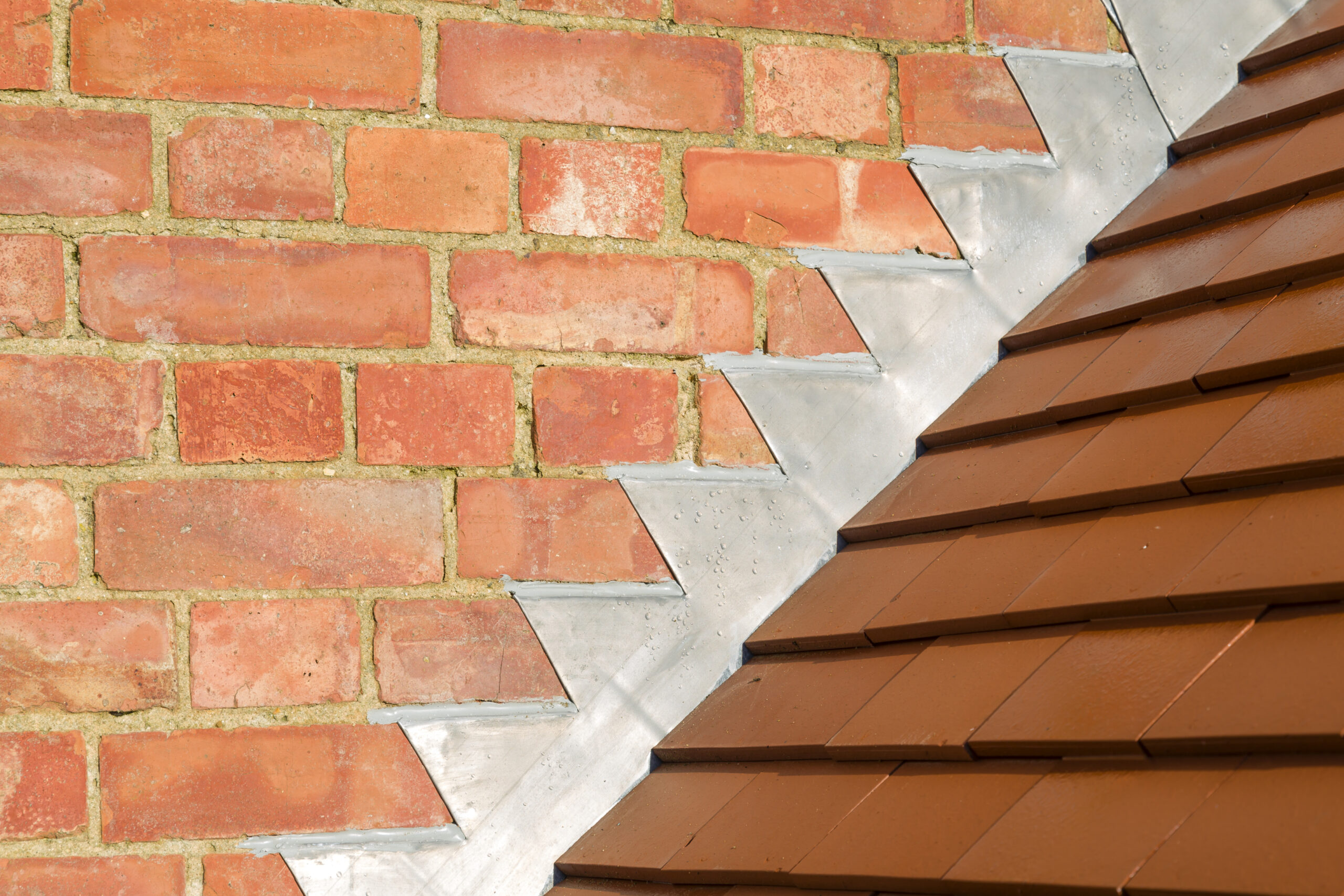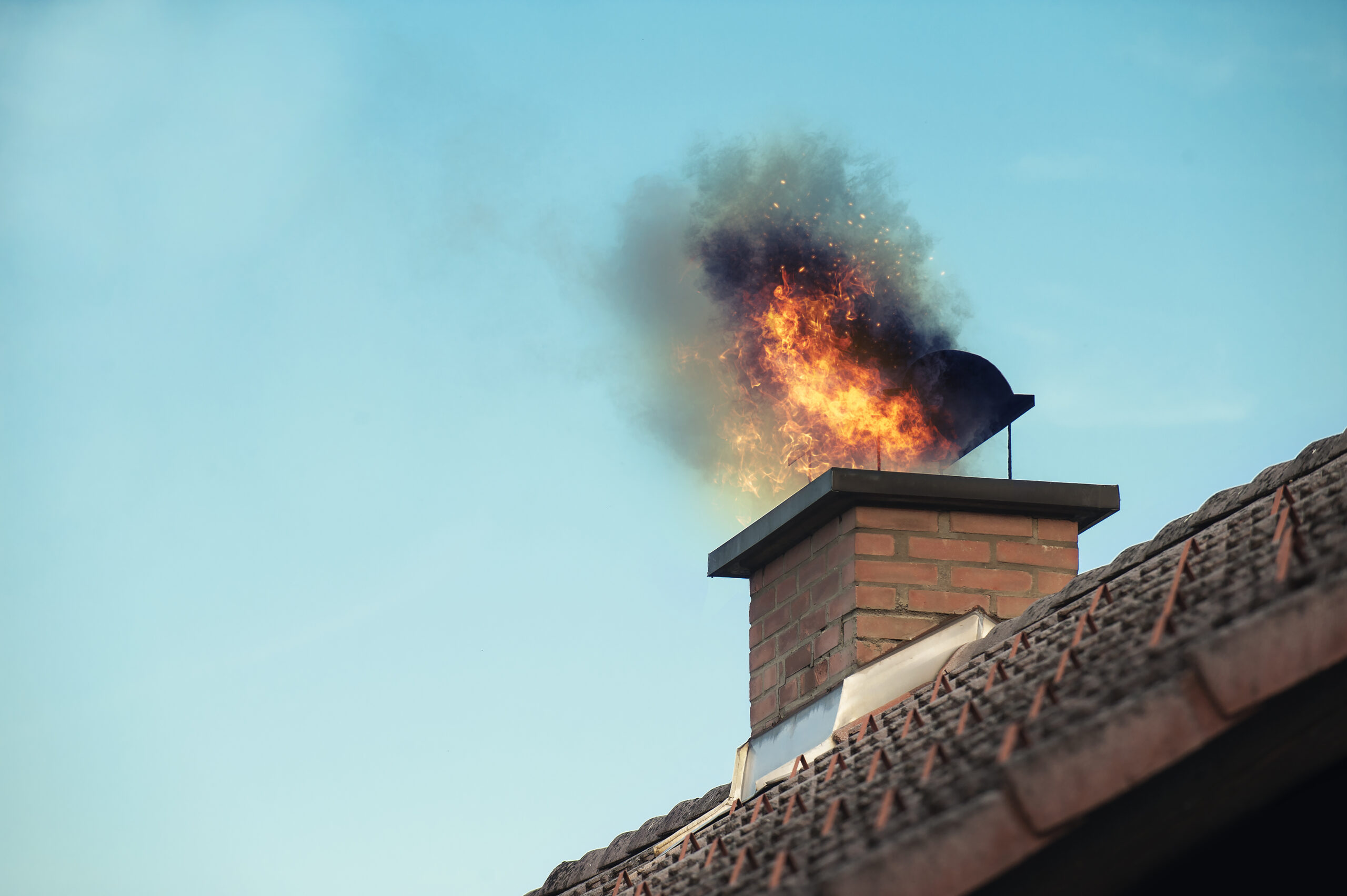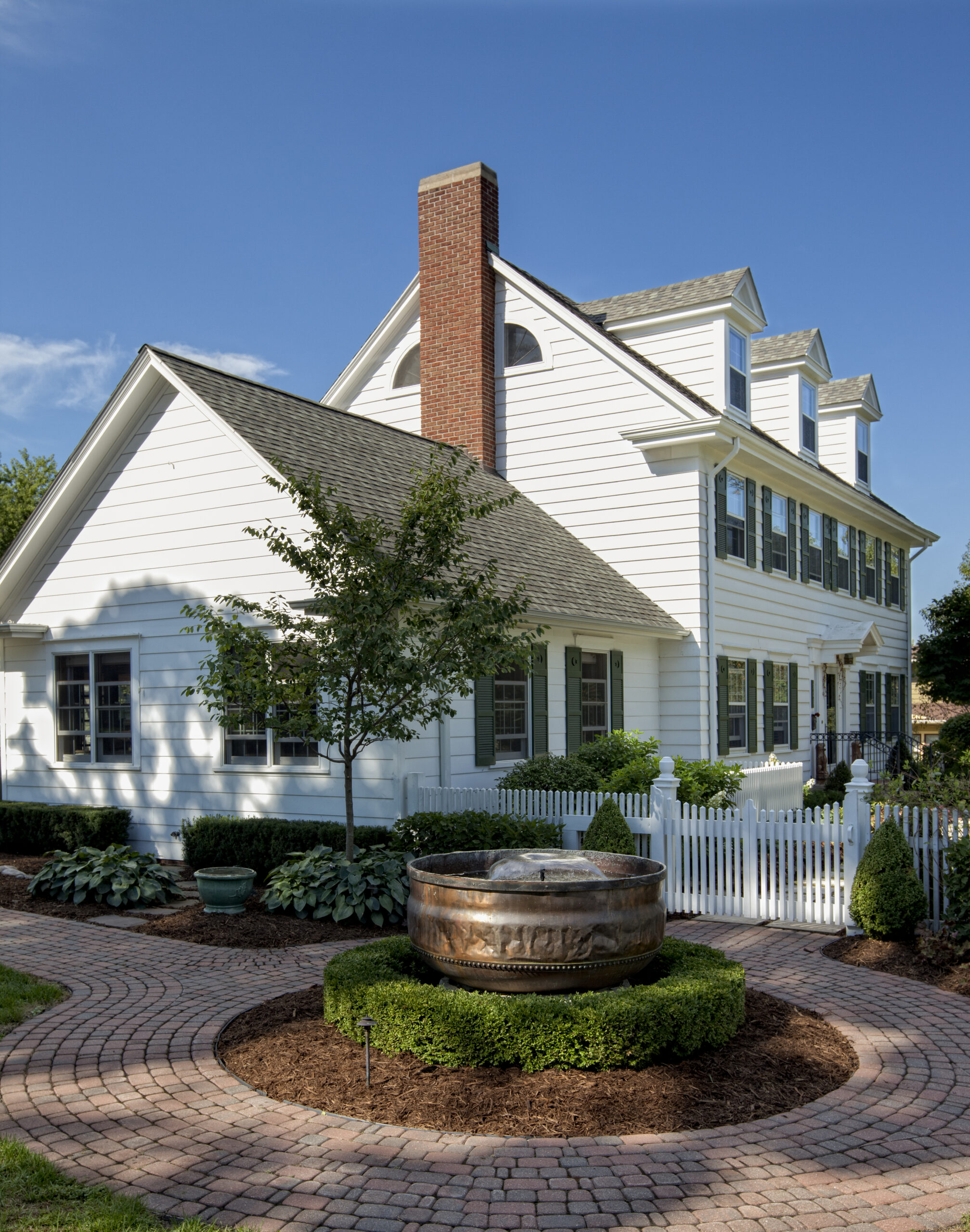Why Do I Have a Chimney But No Fireplace?
Why do I have a chimney but no fireplace?
It seems like a mystery at first, but rest assured, this is no “staircase to nowhere” type situation. In fact, there are several simple reasons why you might have a chimney even if your home does not feature a fireplace. Let’s take a look.
3 Common Reasons You Have a Chimney But No Fireplace
No mystery here:
- You Have a Wood Stove. Just like fireplaces, wood stoves require a chimney to allow the byproducts of burning (smoke and noxious gasses like carbon monoxide) to exit the home safely while also cycling in air from the outside for a more effective fire. If you have a wood stove, you have a chimney.
- You Have a Furnace, Boiler of Water Heater. Other heating appliances, such as oil- or propane-fueled furnaces and boilers also require a chimney. The reason is the same: to ventilate smoke and gasses, while allowing the appliance to work as efficiently and effectively as possible. Note: some gas heating appliances are vented via an exhaust pipe while others are ventless (which requires adequate ventilation in the home, so always rely on an expert when considering one of these models). But by and large, heating systems like an oil boiler or a gas furnace do require a chimney for safe and efficient operation.
- You Actually Do Have a Fireplace. Wouldn’t you know if you had a fireplace? Well… it may not be as obvious as you think! Fireplaces were common features in houses built before 1900. If you live in an older home, previous owners may have upgraded their heating system to more modern options, such as oil, gas, or electric. They didn’t need the fireplace anymore, so they filled it in. Doing so was less expensive than removing it and the chimney altogether. This may also be why you might have a mantle with no fireplace! These were often kept as a decorative touch.
No Matter What the Reason – Maintain Your Chimneys!
If you have a heating device, whether wood, oil, or gas-powered, it is essential that you follow a maintenance routine that includes a yearly cleaning and inspection. This may seem like yet another to-do on a long list, but it is one that will help keep you, your household, and your property safe. Further, it will ensure that your stove, furnace, boiler, or other heating systems operate with maximum efficiency.
What about unused chimneys? What if you do have a fireplace that was filled in and you do not use it for another appliance? Even these need to be properly ventilated and maintained in order to prevent moisture from accumulating inside of it and in your house. These chimneys also expel the byproducts of production indirectly from other heating devices you do use.
In short: if you have a chimney, used or unused, make sure it is in good (safe!) condition.
Brick + Ember: Here for You
Time to schedule your annual chimney cleaning and inspection? Contact Brick + Ember. Our top priority is your safety.
Do I Need a Certified Chimney Sweep?
When you have your chimney cleaned properly every year, you increase the safety and efficiency of your heating appliance, whether wood, oil, or gas. Doing so ensures that smoke, toxic gasses are able to exit your house safely and that your system operates as effectively as possible. Not only that… you can rest easier at night.
Here’s a reality that may make it a little more difficult to get those peaceful Z’s. Anyone can hang out a shingle and claim to be a chimney sweep. Untrained amateurs, though, can cause big headaches (and worse) for homeowners.
Yes, you do need a certified chimney sweep. Here’s why.
A Certified Chimney Sweep Is a Must
Remember Mary Poppins? The chimney sweep was charming, jovial, and had a great voice – in the real world, though, these skills matter much less than a full technical knowledge of chimneys and flues! The Chimney Safety Institute of America (CSIA) is a nonprofit committed to educating, training, and certifying chimney and venting professionals. A leader in the field since 1983, CSIA is nationally recognized, and their credentials hold real weight in the industry and with homeowners.
They may or may not be able to carry a tune, but a CSIA certified chimney sweep does:
Receive extensive training and pass rigorous exams. In order to gain certification as a chimney sweep, professionals must be thoroughly educated on fire codes, clearances, and standards for the construction and maintenance of chimneys. Certification exams are intense and require deep knowledge and meticulous attention to detail. This isn’t just “book learning.” These pros apply their learning each and every day to ensure the safety of their customers.
These professions prioritize ongoing education and training. To maintain their certification, chimney sweeps engage in continual development to keep their skills sharp and stay up to date on the latest in chimney science and standards. They are required to complete continuing education units (CEU); if they have 48 CEUs, they can simply renew their certification. If they have at least nine CEUs but less than 48, they can renew after successful completion of the exam. If they have fewer than nine, they may take a Certified Chimney Sweep (CCS) review course and exam.
Whatever route the professional takes, CSIA does not simply hand out credentials. They are earned.
Certified chimney sweeps adhere to a strict code of ethics. Certification indicates that not only does a chimney sweep have the knowledge required of the job but the attitude and mentality. The CSIA Code of Ethics encompasses everything from following proper safety regulations and complying with applicable building codes to rendering services in an “honest and fair manner” while promoting and educating consumers about safe practices.
They are nationally recognized. CSIA certification is recognized by industry organizations, insurance underwriters, and state and federal agencies as the measure of a chimney’s sweeps knowledge.
Certified chimney sweeps know what they’re looking for when cleaning your chimney. Anyone can shine a flashlight up a chimney and call it a day. You need, and deserve, more from your chimney sweep. A CSIA certified professional knows what to look for when it comes to your system. If it is not safe, they will educate you immediately as to the best steps to take. And again, because they operate with this strict code of ethics, they will present you with all the options without trying to “upsell” you on any further products or services. They give you the information you need to keep your family and home safe.
Your Brick + Ember Certified Chimney Sweep
Our mission is to serve our customers humbly and honestly; we put your safety first, always. We understand that trust and confidence is important to you. It is equally important to us. This is why all of our technicians are CSIA certified. Further:
- They all carry property ID so you know who is coming into your home. Do not hesitate to ask to see credentials. Our people are happy to put your mind at ease at any and every step of the process.
- Our team members arrive in a branded car so you know it’s us!
- We take the time to listen to your needs. We don’t like giving sales pitches; we’d much rather provide you with exceptional service.
With Brick + Ember, you will sleep easier at night. Let us take care of your chimney maintenance needs. Get in touch with us to discuss your needs or schedule your annual cleaning and/or inspection.
How to Put Out a Chimney Fire: 7 Home and Life Saving Tips
Oh, a chimney fire will just burn itself out. No big deal. That’s what a chimney is for, after all.
This is a common misconception when it comes to chimney fires – and it can be a very dangerous one. According to the Chimney Safety Institute of America, there are over 25,000 chimney fires in the US each year. In terms of property damage and loss, the cost is estimated at over $126 million. The cost when it comes to human life is incalculable.
It is essential that homeowners are prepared and know how to put out a chimney fire.
This. Is. Serious.
Many people assume that chimney liners are designed to contain fire. This is another dangerous misconception. They are not; they are designed to contain smoke and gasses, providing a safe route from the heating source to the outdoors.
If there is a fire in the chimney, theoretically yes, it can burn itself out – as long as it doesn’t have access to more fuel (wood from the firebox, creosote, oxygen, etc.). But as or more likely, the fire will cause the liner to crack, warp, or buckle, depending on the material from which it’s made. Heat, smoke, and flames can then access other areas of your home, including your attic, walls, ceilings, and nearby combustibles.
The best advice is to play it safe: a chimney fire is serious, and it can even be life-threatening.
How to Put Out a Chimney Fire
You’ll hear all kinds of advice when it comes to how to put out a chimney fire, from hosing down the chimney to dousing the flames with salt. We want you to do the safest thing possible for your home – and your family.
1. Get Everyone Out
This is basic fire safety: Have an evacuation plan in place with multiple exit options, if possible. Be sure to establish a meeting place that is far enough away from the house to ensure safety. The first and most critical step is making sure everyone is out of the house. As you leave, close the doors to cut off as much oxygen as you can.
2. Call 911
If you call in a four-alarm fire, and it turns out that you could’ve taken care of the situation by shutting the damper… well, better safe than sorry. You never know what’s going on in the chimney and if heat and flames have spread to other areas of your home.
Even if you think you have extinguished the fire, call 911 to have trained firefighters assess the scene.
3. Cut Off the Fire’s Fuel Supply
If you determine that the situation is safe (and everyone else is out), you can close any openings in the fireplace or stove, such as the damper and flue. Again, this cuts off oxygen, which fire needs to spread.
You may also want to have an ABC fire extinguisher on hand. Point the nozzle at the fireplace grate or firebox and deliver short bursts, careful not to throw embers into the air. Alternatively, you can use sand, salt, or baking soda to douse the flames in the firebox.
4. Hose Down the Chimney
If the fire department has not arrived at this point, and the situation is still safe, use a hose to dampen the chimney outside. Use a gentle spray to avoid damaging the inside of the chimney.
5. Clean Out the Firebox
Again (and we’ll keep repeating this!), if it is safe, use a wood stove shovel to remove debris from the firebox. Put it in a metal bucket and take it outside. Get your hose again, and spray the bucket and debris to make sure it is completely extinguished.
6. Use a Chimney Extinguisher
Products like Chimfex are made specifically for chimney fires. These fire suppressant sticks emit smoke and particles designed to displace the oxygen within the flue, suffocating the fire and lowering the temperature in the flue.
Make sure you know how to use Chimfex before an emergency arises. You will need to activate it by removing the top lid and exposing the scratch surface on the cap. Twist and remove the cap; you will see a black button. Lightly scratch the black button with the cap, and toss the stick into the stove alongside the fire (not directly in it). From there, be sure to close air inlet controls and open the damper.
7. Let the Firefighters Do Their Job
You may be confident that you have successfully extinguished the chimney fire. Great! But let the fire department examine the scene and assess whether there is an ongoing danger. Your safety is the top priority.
What To Do After a Chimney Fire
Experiencing a chimney fire – even if it did not do much damage – can be frightening. The last thing you want is a recurrence! In the aftermath of a fire, have your chimney inspected by a professional to ensure that it is safe to use and that any damage has been cleaned and/or repaired properly.
The good news is that the vast majority of chimney fires can be prevented by taking simple steps like routine cleaning and inspection.
Taking a minute to schedule an appointment with Brick + Ember can save you not only money but deliver priceless peace of mind.
What Is a Level 2 Chimney Inspection – And When Is It Required?
No one wants to go through it; we don’t even want to think about it. A house fire can be devastating, but, unfortunately, they are not rare. According to the National Fire Protection Association (NFPA), in 2020, there was a home structure fire every 89 seconds, a home fire injury every 46 minutes, and a home fire death every three hours and 24 minutes. Of the 1.4 million fires to which departments responded, 26% were in residential structures, but they accounted for 75% of civilian fire deaths and injuries.
We do not want you to become a statistic. The good news is that many home fires are preventable, and there are easy – and effective – steps you can take to reduce your risk. A chimney inspection is one of the most important.
What is a level 2 chimney inspection, and when do you need one?
What Is a Chimney Inspection?
During an inspection, a trained professional evaluates the chimney and determines whether or not it is fit to use. But not all inspections are the same – nor are all inspectors! It is critical that you are aware of the different levels of inspection, when you need them, and who should conduct them.
Some techs will shine a flashlight up your chimney and give you the go-ahead for another heating season. To ensure your safety, and that of your property, we recommend a much more thorough approach! It is important to choose a Chimney Safety Institute of America (CSIA) Certified Chimney Sweep; this means that the professional has received extensive training and education and can effectively evaluate and sweep a chimney.
The CSIA, in compliance with the NFPA, has developed three levels of inspections. A level 1 is the most basic. Your Chimney Sweep will look at the accessible portions of the chimney interior and exterior, as well as the accessible portions of the chimney connection and heating appliance. They want to see if it’s free of obstructions and buildup and that components are in good condition. You can safely go with a level 1 inspection if you haven’t made any changes to your heating system, will continue to use it the same way, and you have the chimney professionally cleaned routinely.
Now, there are some cases when you’ll need to level up, so to speak.
What Is a Level 2 Chimney Inspection?
A level 2 inspection is more involved. In addition to the steps taken for a level 1 inspection, the Chimney Sweep:
- Performs a visual inspection of the internal surfaces and flue liner joints
- Looks at clearances from combustibles
- Inspects the accessible portions of the chimney interior and exterior, including basements, attics, and crawl spaces
While they are not going to go in and demo their way through walls and floors, they are going to do a more thorough examination of the chimney. This is required when:
- You have made changes to your heating system or the way you will use it (e.g. you convert from wood to gas)
- You have made changes to the material and/or shape of the flue (e.g. you have relined it)
- You intend to use a previously unused heating system/chimney
- You have just bought your home or took ownership of the property
- You have had a chimney malfunction
- External factors, such as fires, earthquakes, or severe weather, have or likely have damaged the chimney
If the Chimney Sweep finds or suspects a serious hazard or hidden problem after conducting a level 1 or 2 inspection, they will recommend a level 3. This is much more extensive and often requires them to access harder to reach areas. For example, they may have to remove drywall or the chimney crown to get a better look at the situation. They will be sure to clear this with you and explain the process in detail.
Do you need a level 2 inspection? Now’s the time. Don’t wait until heating season to wonder if your system is safe for use. A Brick + Ember certified Chimney Sweep will give you the assurance and peace of mind you need.
Contact us to discuss your needs and schedule a chimney inspection.
The Right Way to Light a Fire: Surefire Ways to Stay Warm, Cozy, and Safe
It never fails: it’s a cold, dark day, and all you want is the warmth and comfort of a blazing fire. And all you get is frustration and a spark of flame that is quickly snuffed out! Sure, just turning a dial or pushing a button is easier, but nothing beats the heat of a fireplace or wood stove… That is, if you can get it going. Fear not, with a few tricks of the trade, you can skip the aggravation and light a fire successfully every time.
Light a Fire – On the First Try
When we think of technological advances, cars, computers, and smartphones come to mind, but the ability to control fire is one of the most significant by far. Our earliest ancestors learned to “stretch” naturally occurring fires by adding combustible materials. Then came the use of flint. Then came hearths and cooking and gathering. It’s an incredible evolution – but you may feel like a Neanderthal when it comes to starting a fire!
Here are some easy-to-follow steps to help you light a fire:
1. Start by gathering the supplies you need:
- A clean chimney and flue. Always be sure that your system is properly cleaned and inspected before you start your first fire of the season.
- A few pieces of seasoned firewood – and more on standby. “Green” wood is still wet at its core and will not burn easily or steadily. You’ll also generate a lot more smoke.
- Kindling sticks. A dozen or so pieces should be fine.
- Newspaper for tinder.
- Extra-long matches or a utility lighter, with a long neck.
- A poker, fireplace/stove shovel, and metal ash bucket with lid.
2. Clear combustibles from the fireplace/stove area.
Do a visual sweep of the area around your fireplace or stove. Remove any items, such as clothing, books, paper, etc., that could ignite with an errant spark. If you have a fireplace, the hearth stones should be clear of any obstruction. If you have a wood stove, make sure you have proper clearance from the walls and that they are treated with a fire-retardant material. The stove should also be on a non-combustible floor pad (bricks, ceramic tile, and other surfaces are both safe and attractive!).
3. Open all of the air vents/dampers.
This is an important step to take for two reasons. One, it allows more oxygen into the firebox, providing fuel to the fire, and, two, it prevents smoke from backing up into your home. Smoke, and toxic byproducts of combustion, like carbon monoxide, need a safe escape route to the outdoors.
If your home or camp is especially drafty, make sure your clothes dryer and any bathroom and kitchen exhaust fans are off.
4. Place Your Firewood, Tinder, and Kindling In the Fireplace or Stove
Depending on how big your firebox is, lay two or so pieces of firewood in the bottom, parallel to each other. Keep a few inches of space between them – remember, air is fuel. Next crumple up some newspaper and place it between the logs. This is your tinder; it burns quickly. To make sure your fire catches, you need to put a layer of kindling (small sticks) on top. Remember to keep a little space in between.
5. Light It Up.
Use an extra-long match or utility lighter to light the fire. The tinder will create an immediate flame, catching the kindling and eventually the wood. Give it a little time. When the fire is established, add another log to keep it going. You can then close your vents or dampers off a bit. This will keep heat from escaping up the flue. Depending on your system, it can take a little experimentation to get the right air flow to maximize heat and efficiency.
Remember, whenever you open your stove to add more wood, open the damper to avoid a face full of smoke.
Preheating Your Flue
If you’re not having much luck, you may need to preheat your flue. If you haven’t used your fireplace or wood stove, the flue is full of cold air. Since it is heavier than warm air, it acts as a kind of plug. This can make it more difficult to light a fire and keep it going. You may also generate more smoke.
When do you need to preheat your chimney? It’s a good idea for your first fire of the season or when you haven’t used your heat source for some time. You can also do a quick check by lighting a match or utility lighter near the flue. If the flame is being pulled upwards, good news: the smoke will go that way as well. If it pulls back towards the room, that cold air plug is getting in the way.
Sometimes, just opening the damper or vents all the way while preparing a fire is enough to shoot warm air up the flue, which can take about a half hour. You can also preheat it to save time. Don’t worry: it’s a quick and easy process! Lay your fire as outlined above. Then, twist some newspaper into torches. Light a few and hold them near the flue in your firebox. The heat will rise, and this is typically all that’s needed to “unplug” the cold air.
From there, light your fire, add more wood when necessary, control your dampers/vents – and finally, sit back and enjoy the incomparable warmth and glow of your fireplace or woodstove.
Stay Warm – and Safe – with Brick + Ember
Knowing how to light a fire is important. Even more critical is ensuring your chimney and its many components are ready for the job. Keeping your family and home safe is Brick + Ember’s number one priority. Start every fire with peace of mind by scheduling regular cleanings and inspections. Get in touch with us to see how easy it is.
How Do Chimneys Work When It Rains – And Why Is Yours Leaking?
Chimneys are designed to allow smoke and toxic by-products of combustible materials to safely escape from fireplaces, wood stoves, and furnaces. The earliest versions were simply holes cut through the roofs of thatch structures – while we have certainly come a long way since then, they still perform the same function and are essentially holes in your home (albeit far more sophisticated ones!).
So, how do chimneys work when it rains? How do they ensure harmful gasses exit while barring water from entering? And, finally, what happens if yours isn’t doing its job?
How Chimneys Work When It Rains
A chimney would be little use if you couldn’t use it in inclement weather. Even if the flurries aren’t flying, cold, wet late fall and early spring weather means many of us are firing up our heating systems. When the weather outside is frightful, what keeps the inside delightful?
Many “actors” play a role in the functioning of the chimney, but the chimney crown and cap are the stars here.
Chimney Crown: This a large metal, concrete, or stone slab that covers the entire opening and extends about 2 - 2.5 inches over the chimney structure. When rain or snow falls, the crown directs the water onto the roof where it can flow down without damaging the chimney.
Chimney Cap (also called a rain cap): Think of the cap like an umbrella; placed directly on top of the flue or over the crown, it prevents precipitation and moisture from entering your home. We highly recommend installing a cap that has a wire mesh screen as well; this keeps birds, critters, nesting materials, leaves, and other debris from finding their way down your chimney like Old St. Nick. The cap also keeps embers and sparks in, vastly reducing the risk of a roof fire.
Some chimney caps are designed to improve draft, which helps pull smoke and noxious byproducts (e.g. carbon monoxide) out of your home, replacing it with cooler air, which pushes more smoke and gas out. This helps enhance safety and gives your fires a better chance at success.
Water Is the Enemy!
Keeping water away from and out of your chimney is critical; moisture can cause significant damage to the structure. In addition, you risk weakening the walls and ceiling around your fireplace/stove, damage to the firebox, cracking of the flue, rusting and corrosion, and other problems that can lead to unsafe, and expensive, issues.
If you do see some water infiltration with your chimney, it might be because:
- You do not have a rain cap. These may not be installed as a matter of course but rather as an “optional” add-on. It’s not optional! Invest a small amount for a big return.
- You have the wrong rain cap. If the rain cap does not fit optimally, it exposes your flue and fireplace/stove to the elements. This is little better than no cap at all.
- Your flashing is not functioning properly. Flashing is a thin metal material installed around the chimney. It diverts water away from the chimney and roof. If it is not installed properly or it has worn down, water is allowed entry – and this can lead to roof, chimney, ceiling, and wall damage.
- Your masonry is damaged. If you have a brick and mortar chimney, the components can break down over time. The bricks can spall (i.e. splinter apart) and crack. Not only does this make your chimney look unkempt and shabby, it sets you up for serious problems.
Chimneys are complex systems, and leaks can be difficult to detect. Often, homeowners do not realize there is a problem until they’re dealing with extensive damage. The best way to prevent expensive headaches – and, most importantly, protect your family, home, and possessions – is to schedule regular chimney inspections and cleanings. While the Brick + Ember team is well-versed in repairing damage, we are committed to helping you avoid this costly step.
Brick + Ember is committed to ensuring your system works optimally and safely. Get in touch with us to discuss your needs. We are here for you.
How Does a Chimney Work?
Have you ever wondered how your chimney works? If you’re like most of us, the answer is a resounding “Nope!” It just does. This is one of those aspects of the home that tends to go unnoticed … unless there is an issue. Because the risk involved with chimney malfunctions is so great in terms of safety and cost, it is important to understand how it works – and how to keep it in top operating condition.
The Evolution of Chimneys
The chimney is one of the most important inventions of modern life. In the first homes (or huts, rather), people in colder climates had fire pits inside and may – or may not have – cut a hole in the roof for the smoke to exit. It wasn’t until the 12th century that folks began installing an ingenious (but dangerous!) contraption that allowed smoke to escape. Early models were “wattle and daub,” a wood structure covered with straw, mud, clay, and dung or wood lined with clay. We’ve come a long way!
As building science evolved, so did chimneys. The point remains the same though: to give smoke and toxic gasses (e.g. carbon monoxide, or CO) a direct path out of the home. Today, chimneys are constructed of brick and mortar or prefabricated metal. The flue (i.e. the “tunnel” through which smoke and byproduct gasses exit) is then lined with a material like aluminum, stainless steel, or PVC to prevent the buildup of corrosive creosote and soot, which can lead to chimney fires and CO poisoning.
Whether you are using wood, oil, or gas as fuel, you need a functional chimney to vent the byproducts of combustion. A chimney for a wood-burning stove or fireplace works in essentially the same way as one designed for oil and gas appliances. Let’s take a look.
How Does Your Chimney Work?
Heat rises, right? This is due to the stack effect. When it comes to your chimney, the warm air, including smoke, rises up from the heat source (e.g.. your wood stove or furnace) and through the chimney flue. The rising warm air is called the draft. A good, strong draft pulls the smoke and byproduct gasses out of the home, replacing it with cooler air, which continues to push the smoke and gasses out… It’s a great cycle.
What if that cycle is interrupted? If you have a poor draft, smoke and gases can fill the living space instead of escaping. It can also put out your fire or cause malfunctions in your oil or gas furnace. This can happen for many reasons, from an obstruction in the chimney to build up of soot and creosote to a closed damper.
Maintaining Your Chimney
Chimneys play an important role in not only ensuring your home is comfortable and warm, but that you and your loved ones are safe. No matter how clean the fuel you burn, there will always be hazardous byproducts. They need to be vented out properly. To protect the people, property, and possessions that mean most to you, schedule annual chimney cleaning and inspections. It’s a small investment that has big returns when it comes to safety and peace of mind.
At Brick + Ember, we are not most people! We think a lot about chimneys – as well as your safety and wellbeing. Contact our team to request an appointment.
How Do You Prevent Chimney Leaks?
The point of a chimney is to ensure that smoke and toxic byproduct gases, like carbon monoxide, have a direct route out of the home – and that you stay warm, cozy, and above all, safe throughout the long, cold winter months. But what keeps the elements from getting in? What is placed around chimneys to prevent leaks?
Preventing Chimney Leaks
Your chimney travels from your heat source and extends out of your roof. That’s its job. It needs to vent dangerous smoke and gas away from your home. But this leaves your roof vulnerable: a big hole is typically not great news when it comes to the barrier protecting you from the great outdoors!
How do we prevent chimney leaks?
Roof Flashing
Roof flashing is key in preventing leaks – and costly damage to your home. This thin metal material is installed around the chimney, and it directs water away from the roof. You’ll also see flashing in other areas that are vulnerable to leaks, such as valleys, the sides of walls, and dormers.
A licensed, certified chimney professional may use the “step flashing” method. Here, they place an L-shaped piece of flashing under every shingle that butts up against the chimney. One side is under the shingle, while the other attaches to the side of the chimney. They may also opt for “counter flashing.” This is a continuous strip of aluminum, copper, tin, galvanized steel, or plastic that covers the step flashing.
Roof Crickets
Crickets… Really! Not only are they essential in diverting water away from your roof, they are required under International Building Code (IBC) as of 2012. Roof crickets are double triangular structures situated behind a chimney, perpendicular to the slope of the roof.
Why do you need them? Imagine that it’s raining: water is coming down your roof. It hits the flat wall of your chimney, where it pools. This will eventually lead to a leak. With these structures installed, though, the water hits the cricket instead and has a clear path down to your gutters.
Be aware that if you have a roof that was installed prior to 2012, you may not have a cricket. When it’s time to replace your roof, you’ll need one to comply with code – and to help protect your investment!
Chase Covers
Another way that we can prevent chimney leaks is with a chase cover. Simply put, the chase is part of the chimney that extends from the roof. It helps keep burning embers away from the roof and controls what comes out of the chimney. The chase cover is a metal covering or cap that controls what goes into the chimney. In other words, it keeps water and moisture, not to mention debris and critters, from entering the chimney.
Remember, a chimney is essentially a big hole in your roof! It is crucial that components of the system – flashing, cricket, and chase cover – work together in order to prevent leaks that can result in significant damage. If you are experiencing issues – or want to avoid them! – do not hesitate to contact Brick + Ember. We’re here to help.
Why Are Sparks Coming Out of My Chimney?
When sparks are coming out of your chimney, it’s not the optimal time to stop and ask, “Why?” It’s time to call the fire department! One spark is typically not a problem; it’s not unusual for an ember to fly out from time to time. However, if you are seeing multiple sparks, dial 911 and make sure those trucks are dispatched ASAP. You likely have a chimney fire – and this can evolve into a highly dangerous situation quickly.
Sparks Coming Out of the Chimney?
What’s the big deal if there are some sparks coming out of the chimney?
A highly dangerous myth and misconception is that chimneys are designed to contain fire. They are not. They are designed to contain smoke. If there is a fire, it can cause a tile liner to expand and crack in minutes – or even just seconds – in heat as low as 451-500℉. Heat and fire can then spread to the attic, to nearby walls, and to combustibles throughout your home.
What about stainless steel? These liners are tested to 2100℉ – unfortunately, flue fires can burn as hot as 3000℉. The steel’s molecular structure actually changes, warping and buckling occur, and again, heat and fire can spread throughout the home.
Can’t happen to you? Every year, there are over 25,000 chimney fires in the United States, creating $125 million in property damage. Beyond the monetary loss, though, is the incomparable loss of life. Several hundred people are killed each year in house fires, the majority of which are “confined fires” (occurring in chimneys, flues, or flue burners).
Fortunately, most chimney fires can be prevented.
What Causes Chimney Fires
Dirty chimneys are the leading cause of contained fires. When we burn wood, the smoke contains unburned wood particles. As the smoke travels through the chimney, it cools and leaves behind a layer of black or brown creosote, which can be flaky, tar-like, sticky, shiny, crusty, or hardened. Each time you enjoy a fire, creosote accumulates on the liner’s walls.
Creosote is highly corrosive; over time, the ever-thickening layer can damage your chimney liner. But more concerning: this substance is also very flammable. Again, a temperature in the flue as low as 451℉ can ignite creosote. For comparison, the fire in your firebox will be about 450℉. That is a very slim margin of error.
From creosote to critters…. Another common cause of chimney fires is the buildup of flammable materials, such as birds’ nests. If a chimney is not capped, all manner of wildlife – birds, squirrels, mice, racoons, etc. – will seek shelter. Their nests, fur, feathers, and waste can block the chimney, dirty the liner, and leave you more vulnerable to fire.
Preventing House Fires
If you see sparks coming out of the chimney, call the fire department. You probably have had or will have a chimney fire, and this can be devastating. At the least, it’ll be expensive – you will need to have your chimney professionally cleaned at the least and very likely replaced to ensure proper, safe operation.
The best way to avoid all of this is to get your chimney inspected and cleaned annually. It’s a small investment that reaps big rewards in terms of safety and peace of mind.
Schedule your appointment with Brick + Ember Outfitters. Nothing is more important than your safety, and that of your loved ones, home, and neighbors.
When to Replace a Chimney Liner
No matter what you are burning for heating fuel, a chimney liner is a must. Not only does it enhance the safety of your system, home, and loved ones, it significantly extends the life of your chimney, protects the expensive masonry and joints, and prevents overheating. While built to withstand rugged conditions, they do not last forever. How do you know when it’s time to replace your chimney liner?
5 Signs It’s Time to Replace Your Chimney Liner
Few of us spend a lot of time thinking about our chimney liners; we either buy a house with a system in place or we install it– and promptly forget it. There’s a good reason for this: stainless steel liners last 15 to 20 years; clay tile or cast-in-place liners can last 50 years, while a high-quality stainless-steel liner may set you up with a lifetime warranty. (Keep in mind, though, that lower quality chimney liners may only offer five or so years of useful, safe service.)
You may not even know how old your chimney liner is! This is why it is so important to be aware of signs that it’s time to replace this essential component.
- The chimney walls are deteriorating. Everything deteriorates over time; it’s a fact of life. But if the walls of your chimney are breaking down at a faster pace than normal, it often means that the liner is not functioning properly. Excess heat and condensation damage the brick and mortar – and they do so relatively quickly.
- You have a condensation problem. Condensation is the mortal enemy of your chimney liner; good liners will ensure moisture is vented out. A buildup of condensation can lead to corrosion, and it is also generally associated with poor airflow. As a result, you’ll have fires that produce less heat and generate more creosote. If creosote accumulates, it can lead to situations where carbon monoxide cannot escape and leaks back into the home.
- You are converting your fireplace. Say, for example, you are ready to stop stacking firewood and convert your fireplace to gas. Liners are not “one size fits all.” Different types of fuels and fireplace inserts require different venting methods, and often, you need to install the liner directly to the new heating appliance.
- The chimney is unlined. Ok, “replace” is not the correct term here because there is no liner to swap out. Liners did not become required until the 1950s; if your home is older, there is a chance that the chimney is not lined. If not, do yourself, your family, and your house a favor: get a liner professionally installed.
- A professional says it’s time to replace your chimney liner! Just like most people don’t spend a lot of time thinking about their chimney liners, they don’t always know what to look for – or have the tools to do a thorough job. This is why it is so crucial to have a professional conduct a full inspection and cleaning each year. They will look for signs of failure or trouble, such as:
- Broken and/or loose bricks
- Deteriorated or missing mortar
- Signs of critters in the chimney
- Water infiltration
- Rusted chase covers
- Creosote accumulation
- Corrosion
- Structural soundness
Can It Wait?
Is your chimney ok for another year? Can you skip the inspection and cleaning because you’ve never had any issues before? We highly recommend scheduling that appointment. Your safety is our top priority: with an improperly functioning chimney and liner, you put yourself (and the people, possessions, and property you love) at serious risk from fire and CO. Beyond those dire, worst case scenarios, though, you could be reducing your heating system’s efficiency, making your home less comfortable, and setting yourself up for more expensive repairs a year or two down the road.
The old cliche turns out to be right: better safe than sorry.
Brick + Ember Outfitters is committed to serving our customers and helping to safeguard your homes and families. Request an appointment and make sure your chimney is ready for the next heating system.

